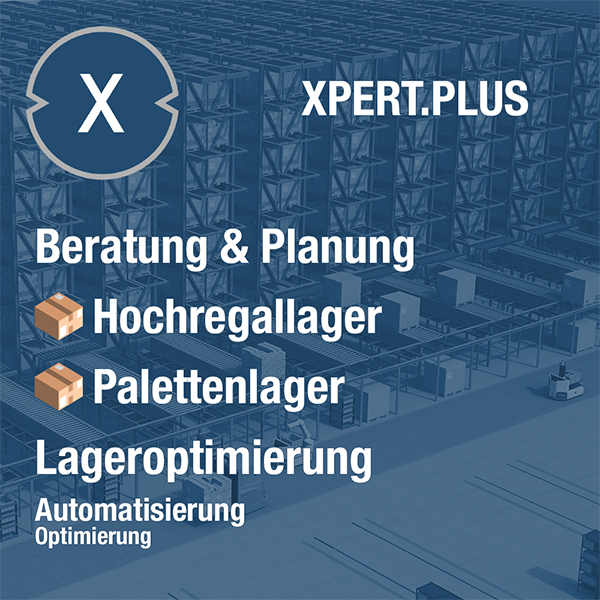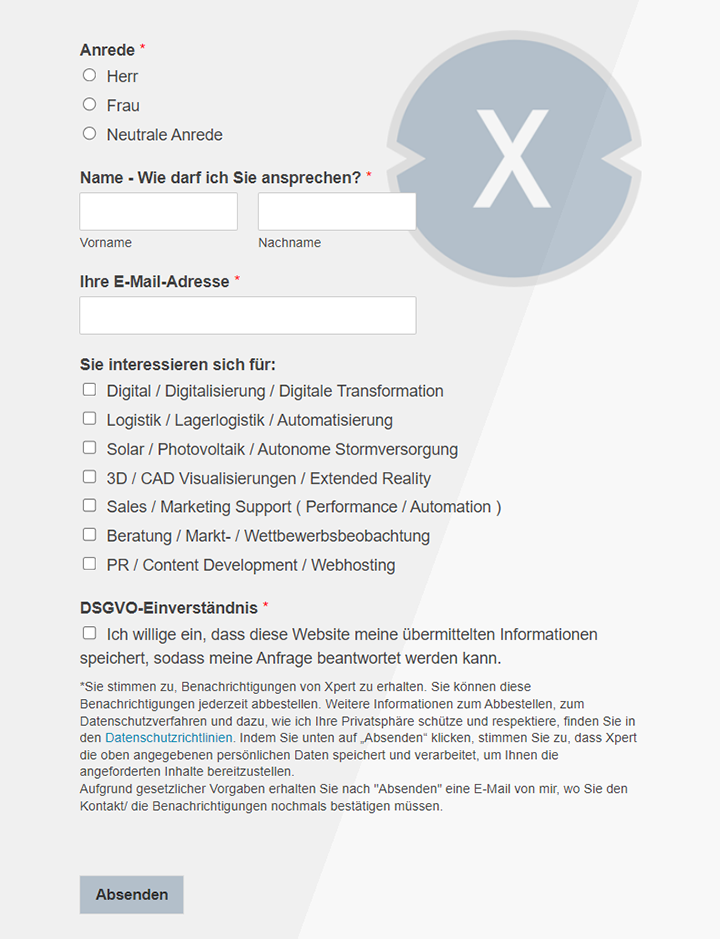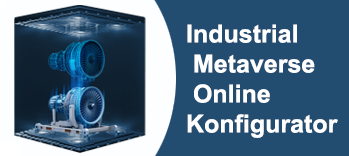The transformation of warehouse technology: high -bay warehouse as the driver of modern intralogistics
Xpert pre-release
Language selection 📢
Published on: June 24, 2025 / update from: June 24, 2025 - Author: Konrad Wolfenstein

The transformation of warehouse technology: high -bay warehouse as the driver of modern intralogistics - creative image: xpert.digital
German industry transforms high -bay warehouse through massive automation investments
High -bay warehouses become the heart of the German logistics transformation
The German industrial landscape is currently experiencing unprecedented change in warehouse technology. High -bay warehouse develops from specialized niche solutions into indispensable building blocks of modern logistics strategies. This transformation is promoted by two central factors: massive investments in new storage capacities and the progressive automation of warehouse processes.
Strong growth and investments: the boom of the high -bay warehouse
The willingness to invest of German companies in modern high -bay warehouse achieves new dimensions. Companies recognize the strategic importance of efficient warehouse systems for their competitiveness across industries. Digitization and sustainability are the drive springs of this development, with robot -controlled systems and intelligent software playing a central role.
Industry variety in high-bay warehouse investments
The range of companies investing is remarkable. In the food and beverage industry, the Martin Bauer Group is an outstanding example. The company built a 31-meter-high high-bay warehouse in silo construction with over 10,000 pallet parking spaces and five shelf alleys. A special feature of this warehouse is the inertization to fire protection, in which the oxygen content is lowered by the nitrogen addition.
The investment boost in the pharmaceutical industry is also remarkable. Losan Pharma is building an innovative logistics center with fully automated high -bay warehouse in Eschbach, which will serve both as a raw material warehouse for production and as a shipping camp. Commissioning is planned for the end of 2026, whereby the high-bay warehouse is being built in self-supporting siloba and connected to the production and packaging areas by driverless transport systems.
Capacity expansion and modernization
The investments primarily aim at three areas: capacity expansion, increase in efficiency and securing the future. Beneo, a manufacturer of functional ingredients, invested 7.7 million euros in a new high -bay warehouse at the Offstein location with a capacity of more than 8,500 euro pallets. This investment quadrupled the company's storage capacity and at the same time significantly reduced the transport routes.
The modernization of existing systems also plays an important role. Gealan invested around 14 million euros in a fully automated high -bay warehouse in Tanna, which is equipped with 5,020 storage spaces and a payload of 1,700 kg per cassette. The system performance reaches up to 70 cassette changes per hour.
Automation and technology: The digital transformation of warehouse technology
The automation of high -bay bearings has developed from an option to a necessity. With Industry 4.0 and the rapid developments in sensors and intelligent technology as well as market growth in e-commerce and grocery delivery, warehouse automation shows significant growth.
Shelf operations as the heart of automation
Shelf control units are rail support vehicles to equip high-bay bearings and take over the storage and outsourcing of pallets, containers and containers. These computer -controlled systems automatically drive to the desired place and storage were on or off. The devices can move over the entire height and length of a warehouse and thus significantly increase the productivity of the entire system.
The functionality is based on three directions of movement: the direction of travel is referred to as the X-axis, the vertical lifting direction as a Y axis and the direction of gang quarrel. Modern shelf operations work work fully automatically and receive all information from the integrated warehouse management.
Pallet shuttle systems for maximum efficiency
Pallet shuttle systems revolutionize compact storage. These semi-automatic high-performance compact storage systems use an electrically operated shuttle that transports pallets into the shelf channels and removes them again. Thanks to this technology, a larger storage capacity is achieved and the goods envelope is increased compared to other compact solutions.
The increase in efficiency is considerable: modern pallet shuttles achieve high driving speeds through electrical drives with frequency control. A pallet shuttle only needs 0.5 to 0.7 seconds per meter for the input or outsourcing process. Shuttle systems can make up to 95 percent of the storage space of a canal bearing usable.
Autostore systems: Innovation in the small division warehouse
Autostore systems represent the top of automation in the small division warehouse. These ultra-compact Goods-to-Personing Systems work with a grid structure, which saves space for walking and driving trails. The autostore robots drive the top of the grid with up to four meters per second and store the containers.
The advantages are significant: companies can expand their storage capacity to four times without needing a new building, and their performance of tenfolds without reorganizing personnel. The system enables less personnel costs due to the higher efficiency of employees and more picke-performance through the goods-to-person principle.
Warehouse Management Systems as a digital nervous system
Warehouse Management Systems form the digital nervous system of modern high -bay warehouse. These software solutions help companies to manage and control daily warehouse operations, from the moment of incoming goods to shipping. WMS systems offer real-time visibility for the entire inventory and integrate with other technologies such as barcode scanning, RFID identification and robotics.
The performance of modern WMS systems can be seen in concrete results: Pets Corner improved the picking efficiency by 38 percent, while Rapid Electronics achieved an on-time-in-full rate of 99.6 percent. Virgin Wines was even able to reduce the inventory by 24 percent, which corresponds to a cost saving of £ 2.6 million.
As a specialized solution, SAP Extended Warehouse Management offers flexible, automated support in efficient warehouse management. The system enables the central control of all goods movements and provides tools for monitoring warehouse activities.
Industry -specific applications and success stories
Food and beverage industry
The food industry benefits particularly from modern high -bay bearings, since it must meet specific requirements for controlled environmental conditions and efficient warehouse management for products with different durability times. Westfalia Europe developed, builds and has been waiting for the food industry, including freshly warehouse, frozen bearing up to -35 ° C and normal temperature storage since 1971.
The Polish snack manufacturer Lajkonik uses a high -bay warehouse with automated drawers to operate the growing demand. The system increases the storage capacity without additional personnel requirements and combines automation with manual transports.
Pharmaceutical and healthcare industry
The pharmaceutical industry is subject to strict regulatory requirements and requires warehouse systems that meet the highest quality and security standards. Kyberg Pharma operates a 16,000 square meter pharmaceutical logistics center with 3,000 shelving places and 3,800 pallet parking spaces. All products are stored and sent according to GDP standards, with strict temperature control between 15 and 25 ° C for regular goods and 2 to 8 ° C for sensitive products.
Automotive industry
The automotive industry with its complex supply chains and just-in-time production process benefits particularly from modern high-bay bearings. Volkswagen operates a body warehouse in Wolfsburg, which temporarily stores around 1,000 bodies on an area of around 40 by 70 meters. The company modernized its shelf funding positions to improve efficiency and accuracy.
Xpert partner in warehouse planning and construction
Strategies for the transformation of intermodal transport solutions: rail as the key to the future
Technological innovations and future trends
Digital twins and data analysis
The use of digital twins is a great opportunity for logistics. These virtual replicas of objects or processes simulate how their counterparts will actually behave. As a result, potential errors can be avoided before they occur and processes are optimized without having to carry out real tests on physical objects.
Human-machine collaboration
The integration of artificial intelligence and human knowledge enables more efficient operating processes in areas such as logistics planning and tour management. The goal is that the technology takes over most of the data calculation and analysis, while specialists make strategic decisions.
Autonomous mobile robots and driverless transport systems
Automatically controlled vehicles and autonomous mobile robots revolutionize internal logistics. While AGVs need the leadership or ligaments, AMRS robots are intelligent navigation and higher flexibility. These systems enable routine material deliveries and increase the flexibility of the warehouse processes.
Economic advantages and increase in efficiency
Cost savings and ROI
Automated bearings significantly increase the efficiency of logistics processes. Companies that have invested in automation were able to record productivity increases of up to 50 percent and a significant shortening of throughput times. The amortization of autostore systems will be reached in around 4.5 years, although the investment costs are higher.
Space optimization and area efficiency
High -bay warehouse in siloba and up to 45 meters can be built and thus offer optimal use of land. Mecalux was able to store up to 15,000 pallets with an installed high -bay warehouse on an approximately 3,500 square meters, which would be impossible in a conventional camp. This spatial optimization leads to considerable cost savings for property and construction costs.
Reduction in errors and increase in quality
Automated systems significantly reduce human errors. Centrado benefited from a 40 percent reduction in picking errors through the use of Körber WMS. Automation enables error -free work processes and improved goods posture.
Sustainability and environmental aspects
Energy efficiency and green technologies
Sustainable storage technology reduces energy consumption and operating costs through more efficient devices and lighting. Through optimized processes and the use of renewable energy sources such as solar systems, companies can minimize their ecological effects. LED lighting systems and smart energy management systems regulate electricity consumption according to current needs.
Circular economy and material efficiency
High -bay warehouse in siloba ways can be dismantled because the structure essentially consists of shelves whose elements are composed or screwed. This can easily dismantle and reuse numerous components. This property supports the principles of the circular economy and reduces waste.
Challenges and solutions
Skills shortage and automation
The shortage of skilled workers in the logistics industry is driving automation. In the United States, for example, there is a significant lack of warehouse workers in an unemployment rate of 4 percent, which forces companies to automate. Similar developments are also shown in Germany, where companies reduce their dependence on available workers through automation.
Integration and standardization
The increasing number of industrial trucks brings challenges in the integration of various proprietary solutions. Flexible hardware, powerful IT infrastructures and standardized communication protocols such as VDA 5050 are essential for successful implementation.
Investment costs and financing
High interest rates make investments in warehouse technology more expensive, but are compensated for by reducing the capital binding costs. Intelligent systems reduce the inventory and thereby significantly reduce the financing costs.
Future view and market development
Technological development
The future of intralogistics is shaped by changing a reactive to an actively designing and process -integrated logistics. The increasing automation through robotics, combined with digital twins, creates transparency and enables self -organized processes.
Market investments and growth potential
Amazon invests 10 billion euros in the expansion of its logistics network in Germany alone and will create 4,000 new jobs in three new logistics centers by the end of 2024. These investments are aimed primarily at research and development, logistics and customer service.
International developments
The US market for warehouse automation grows in double digits, driven by expensive capital costs, high inventory and a shortage of skilled workers. These developments reflect global trends and show the enormous growth potential of the industry.
The transformation of the warehouse landscape
The German warehouse landscape is experiencing a fundamental transformation. High-bay warehouse develops from specialized solutions to standard modules of modern logistics strategies. The combination of massive investments, advanced automation and sustainable technologies creates new standards for efficiency, quality and economy.
The success stories of companies such as Gealan, Martin Bauer Group and Losan Pharma show that investments in modern high -bay warehouse not only justify themselves through cost savings and efficiency increases, but also create strategic competitive advantages. The integration of technologies such as shelf operating devices, pallet shuttles, autostor systems and intelligent warehouse management systems enables companies to react flexibly to market requirements and at the same time achieve their sustainability goals.
The future of intralogistics will be characterized by further automation, intelligent networking and sustainable technologies. Companies that are investing in modern high -bay warehouse today are optimal for the challenges and opportunities of the coming years. The vertical revolution in warehouse technology is not only technological progress, but a strategic imperative for the competitiveness of German industry in the global market.

Xpert.Plus warehouse optimization - high-bay warehouses such as pallet warehouses consulting and planning
We are there for you - advice - planning - implementation - project management
☑️ SME support in strategy, consulting, planning and implementation
☑️ Creation or realignment of the digital strategy and digitalization
☑️ Expansion and optimization of international sales processes
☑️ Global & Digital B2B trading platforms
☑️ Pioneer Business Development
I would be happy to serve as your personal advisor.
You can contact me by filling out the contact form below or simply call me on +49 89 89 674 804 (Munich) .
I'm looking forward to our joint project.
Xpert.Digital - Konrad Wolfenstein
Xpert.Digital is a hub for industry with a focus on digitalization, mechanical engineering, logistics/intralogistics and photovoltaics.
With our 360° business development solution, we support well-known companies from new business to after sales.
Market intelligence, smarketing, marketing automation, content development, PR, mail campaigns, personalized social media and lead nurturing are part of our digital tools.
You can find out more at: www.xpert.digital - www.xpert.solar - www.xpert.plus


























